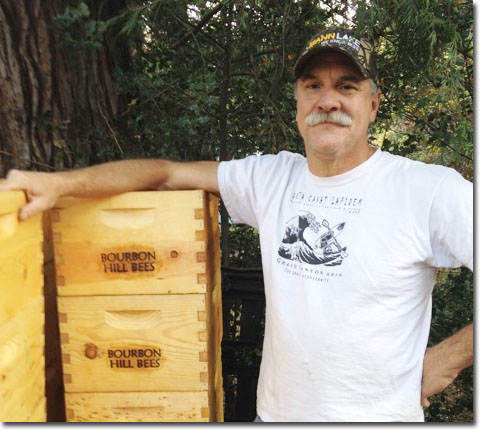Steps to becoming a successful Beekeeper
Keeping bees can be a fascinating hobby with many benefits to you, your community, the planet, and the bees. Starting up can be summarized in a few steps:
- Education
- Location
- Equipment
- Bees!

Education
Education is the most critical step to successful beekeeping and will significantly increase your chances of enjoying a long and happy relationship with your bees. A beginner class is invaluable for getting good basics and hands-on experience. Even longtime beekeepers are sometimes challenged by new issues and are learning throughout their time with the bees. Our association has a great mixture of beginners, hobbyists, and experienced beekeepers. There are so many different areas of knowledge that it can be daunting at first. Don’t despair; remember, there is no single right way to do things. Beware of people who claim to have it all figured out and tell you they have all the answers! There is a fair amount of misinformation, so consult multiple sources if possible.

Equipment
- Equipment for the Traditional Langstroth style of beehive typically includes:
- Bottom board: ( screened or not)
- Top Cover: The Top Covers come in two styles: migratory tops and Telescoping tops.
- Hive Bodies: They come in a few sizes, Deep, Medium, or Shallow. These refer to the height of the box. Some use a combination of one medium and one deep. Another variable for hive bodies is box width- see below (10 frame vs. 8 frame)
- Foundation: is placed in the frame (if used) and acts as a starting template for the bees to “draw” their honeycomb from the beeswax they produce. The foundation can be a whole sheet or a small strip of wax or plastic.
- A Veil or full bee suit, Smoker, Hive tool, and other accessories will complete your inventory.
Location
The location for your apiary has a few considerations. Is your area frequented by bears (most of our county)- you may need an electric fence. Do you have sufficient sunshine- a bit of shade is good in the summer, but sun is best in winter. Is water available? Are you subject to city ordinances? Will your bees be flying past a neighbor’s front door? Drainage issues? Wind protection is helpful.

Bees
Bees! Now it is time to get the Bees! Catching a swarm is one way to populate your hive, but an established bee hive or small portion of a hive known as a “nucleus hive” or “nuc” can be purchased from local professional bee keepers. Packages of bees can be purchased consisting of 2, 3 or even 4 pounds of bees and a queen, or, if you are lucky, a Beekeeper friend will give you some bees.

For Educators and Students
Classes
Please check the current Newsletter for any available local beekeeping classes. Classes are usually held in the Spring.
- Beginning Beekeeping
- Planting for Bees
- Company Product
- Company Product



